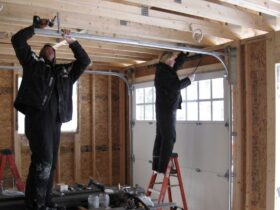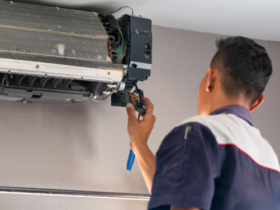Whether it is a commercial or industrial service, butterfly valves come from the family of rotational motion valves that help start, stop or regulate the flow. Meanwhile, the term “butterfly” refers to a disk attached to the rod in a butterfly valve. The disk must be rotated at 90 degrees for the valve to close or open. As such, you will find various types of butterfly valves used for different purposes. And since installing them is a lot beneficial for you, it is a must to consider some factors before purchasing them. So, continue reading this article further to learn everything about them.
What Are the Types of Butterfly Valves?
Butterfly valves have been utilised for different applications and first appeared in the 1930s. Meanwhile, there are two basic types: the wafer and lug valves, which you can learn below.
Wafer valves: The wafer valve protects against bi-directional pressure. Furthermore, this valve is designed in such a way so as to avoid backflow in the system, and it can be attained with tight seals like precision machined, gasket, O-ring, etc.
Lug valves: The design of the lug valve shares some similarities to a 3-piece ball valve in which the line’s one end can be removed without affecting the opposite side. You require two sets of bolts or lugs, flanges, and threaded inserts to execute them. Moreover, you can easily maintain, clean, repair, and inspect the lug valves without shutting down the system.
What Components Are Found in the Butterfly Valves?
Four integral components are found in the butterfly valve: seat, stem, disk, and body. Keep reading to know more:
Seat: The valve’s seat is locked, bonded, and pressed in the body and uses a press fit or a friction fit between the seat and disk edge to offer shutoff. Manufacturers use a wide range of designs to create the seat. But the most popular choice is the single-piece PTFE seat. Meanwhile, what makes the single-piece seat significant is that the metallic springs or O-rings help to limit corrosion and temperature.
Stem: The stem comprises a two-piece or one-piece shaft design. The design helps prevent chaffing between homogenous corrosion-resistant materials.
Disk: With the help of the disk, the butterfly valve can stop the flow without any hassle. As such, you will find different disks that can seal, operating torque, and improve the flow.
Body: The body is designed to fit two flanges of pipe, and the most common ones include wafer and lug.
How to Choose Butterfly Valves
If you want to select butterfly valves for your project, you must consider the following factors:
Weight and cost of the valve: Installing lightweight valves help you save money when compared to the heavyweight cast iron ones. For example, a 10 inch cast iron valve might weigh 490 pounds, whereas a 10-inch lightweight valve might weigh 55 pounds. As such, if the system or the valve is heavy, the pipe hangers should be stronger, and the cost becomes exorbitant. Hence, the cost of the valve entirely depends upon the weight.
Ease of maintenance: Installing the valves correctly can be a great advantage. That’s because they can self-clean themselves virtually. Furthermore, the line’s trash material makes them less receptive to failure.
Pressure drop: Due to excessive pressure drop, the energy price can go up tremendously. And what contributes to pressure drop to the piping system are the valves. Meanwhile, the pressure drop across the opened valve must be of a sufficiently large percentage for changes in the flow of the fluid. You must also ensure that the butterfly valves absorb 25 to 50 per cent of pressure drop.
What Are the Benefits and Uses of Butterfly Valves?
Most of the butterfly valves are light in weight and need less time to open and close. They have high-pressure recovery and offer bubble-tight service. Meanwhile, some of the industries in which these valves are used include food processing industries, fuel handling systems, wastewater treatment, compressed air and gas services, etc.











